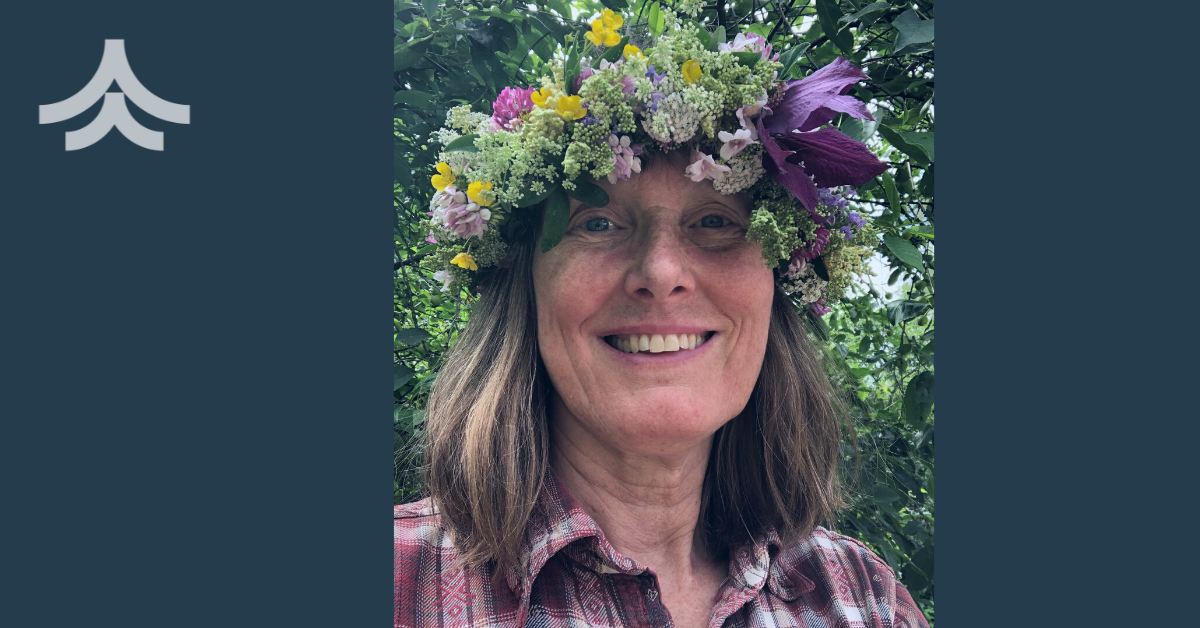Kekkilä PrimeFLOW brings a unique air and water management solution for growers of young plants
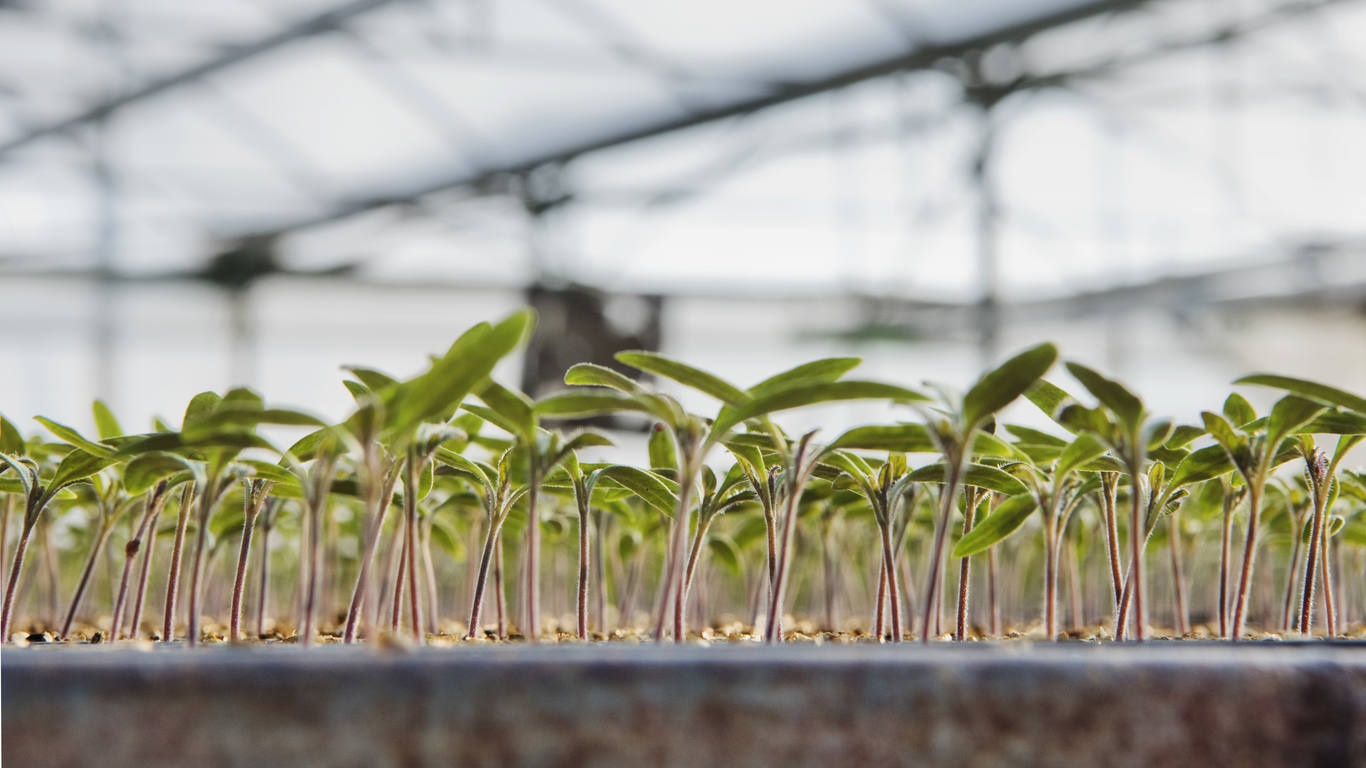
Today at IPM Essen Kekkilä Professional introduces a new product, namely Kekkilä PrimeFLOW, a unique substrate mixture containing renewable wood fibre. Kekkilä PrimeFLOW is produced with inventive solution in Kekkilä-BVB’s factories, which ensures uniform mixing so that the wood fibre is properly fluffed. This enables easy and smooth potting without oversized lumps of fibre or impurities. Kekkilä PrimeFLOW offers growers a product that has good air/water balance, for a competitive price compared to perlite. Kekkilä PrimeFLOW is in production and ready for orders.
Kekkilä PrimeFLOW is developed and tested to improve the growing conditions for bedding plant growers, young plant growers and tree nurseries. “We want to offer both sustainable and cost-efficient solutions for our customers. In continuous dialog with them we are constantly improving our offering for a better growing environment. Kekkilä PrimeFLOW answers some of the requirements of our customers such as products with improved drainage in finer fractions without perlite. With this new product we can bring solutions for tray mixes at a lower price and high-quality material for robotic transplanters.” says Guido Linders, Director, BU Professional growing.
Kekkilä PrimeFLOW solves several issues in small pot production
Nedeljko Basic, the product manager for Kekkilä PrimeFLOW highlights the unique benefits for the growers: “The clear benefits for the small pot grower are tangible. The wood fibre in the mixture ensures reduced shrinkage and increases solids in the mix, improving physical properties. The best usage of fertilizers and water thanks to Higher EAW (Easily available water) is one of the key features of Kekkilä PrimeFLOW. It brings along specific pore size distribution which is the most important factor for the plant’s growth. Furthermore, the optimum level of capillarity forces for all types of irrigation systems makes this product available for all small pot growers.”
Kekkilä PrimeFLOW is completing the Kekkilä FLOW family, which already includes three sustainable products that improve water management: Kekkilä SafeFLOW, Kekkilä EasyFLOW and Kekkilä SteadyFLOW.
Read more: https://www.kekkilaprofessional.com/products/ornamental-and-pot-plants/flow/
Read more about Kekkilä-BVB´s concrete sustainability cases here: kekkila-bvb.com/sustainability
Contact:
Guido Linders, Director BU Professional growing: guido.linders@kekkila-bvb.com tel. +31 (0)653273109
Nedeljko Basic, Product Manager: nedeljko.basic@kekkila-bvb.com, tel. +358 (0)406324837
Kekkilä Professional is a premier brand of high-quality growing solutions for global modern horticulture. Kekkilä Professional is a brand of Kekkilä-BVB, the European leader in horticulture. We provide products and services for professional greenhouse growers, consumers and landscapers to over 100 countries worldwide. We have strong product brands within the professional and consumer growing markets, trading under the names of BVB Substrates, Kekkilä Professional, Kekkilä Garden, Hasselfors Garden, Jardino and Florentus. Together with our customers we grow for a better future. Kekkilä-BVB is a part of Vapo Group.
www.kekkila-bvb.com
BVB Substrates introduces sustainable new innovation for acid loving crops

The new product in BVB Substrates’ portfolio, BVB Quick Rooting Acid Loving Substrate, is a mixture suitable for the cultivation of acid-loving crops. BVB Accretio is used as one of the raw materials. Its unique physical and chemical properties help crops to develop strong root systems more quickly. BVB Accretio is a new raw material made of sphagnum moss. It offers many advantages for growing acid-loving crops, such as quick rooting, which is important for enclosing the roots well while providing sufficient drainage.This ensures the availability of air to the rootzone.
“Recent research shows that adding BVB Accretio to substrates quickens the rooting of crops thanks to the increased porosity of the mixture. BVB Accretio ensures that the plant roots can access water evenly at any time due to the improved water holding capacity it gives the substrate.” says expert product manager Bram van Brommel.
The chemical characteristics of BVB Accretio are particularly suitable for acid-loving crops e.g. due to a low pH level. It provides a good pH-buffer which steadies the pH level throughout the growing stages, making the mixture reliable and stable.
BVB Accretio – a sustainable raw material
The origin of BVB Accretio is in Finland where there is approximately 300.000 hectares of land area suitable for the collection of this moss. Sphagnum moss is a renewable material, which means that it grows back after harvesting and is ready to be harvested again in 20-30 years. Research shows that the harvest doesn’t have a negative impact on the environment.
In addition to the fact that the extraction of the raw material has minimal impact on the ecosystem, it also has a relatively low weight. This means that the transport of BVB Accretio has a smaller environmental footprint.
“For Kekkilä-BVB, sustainability is about a change in how we as a company do business, taking into account the whole value chain. We are focusing on how we can help our customers in the most sustainable way. Using sustainable raw materials such as Accretio in our products helps our customers in their way of doing sustainable business.” says Guido Linders, Director BU professional growing.
Read more: https://www.bvb-substrates.nl/en/bvb-accretio-sustainable-raw-material-for-substrates/
Contact:
Guido Linders, Director BU Professional growing, guido.linders@kekkila-bvb.com,
tel. +31 (0)6 53 273 109
Bram van Bommel, Product Manager for Tree Nurseries, bram.van.brommel@kekkila-bvb.com,
tel. +31 (0)6 55 737 557
BVB Substrates was founded in the Netherlands over 100 years ago. High quality, tailormade growing media under the BVB substrates brand are sold directly to professional growers worldwide. BVB Substrates is a brand of Kekkilä-BVB, the European leader in horticulture. We provide products and services for professional greenhouse growers, consumers and landscapers to over 100 countries worldwide. We have strong product brands within the professional and consumer growing markets, trading under the names of BVB Substrates, Kekkilä Professional, Kekkilä Garden, Hasselfors Garden, Jardino and Florentus. Together with our customers we grow for a better future. Kekkilä-BVB is a part of Vapo Group.
www.kekkila-bvb.com
Peat and after-life concept
Sustainable peat harvesting and after-life
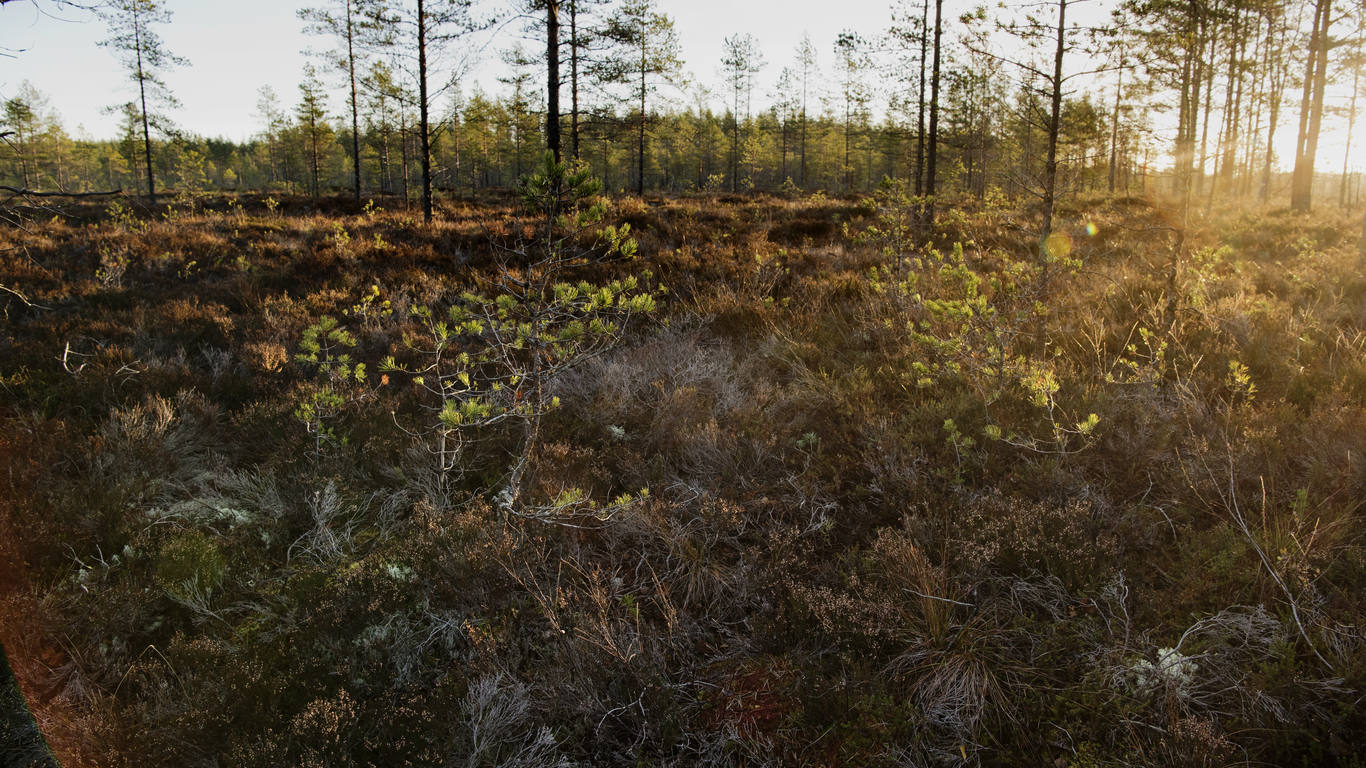
Together with stakeholders, Kekkilä-BVB will develop the sustainable harvesting and after life concept for peat bogs. We own peat bogs in Finland, Sweden and Estonia. To ensure sustainable harvesting and after life processes, we will combine current best practices with a future look. A part of this is RPP certification.
1 Select peat area
Kekkilä-BVB peat is harvested only from carefully selected sites where specific extraction permits have been obtained from the local government. These areas are selected, in part, because they have no conservation value. We are not harvesting peat from protected areas. In European Union, peat extracted for fuel or horticulture is harvested from only 0.4 % of all peatlands.
The most regulated companies are those that have an impact on peatlands. From the initiative, it takes several years until all permissions are granted and extraction of peat can start. This includes assessing the site for its conservation values as well as making specific plans to ensure that the bog can be regenerated, when the peat extraction is finished.
2 Preparing for harvesting
After obtaining the necessary permits a series of ditches is dug across the peatland to drain water from the bog. This allows the surface the bog to dry out in order to enable peat extraction. In its natural state the peatland has an extremely soft surface which prevents machines to operate on the bog. It can take up to three years until extraction can start after the first ditches have been excavated.
Responsible Produced Peat (RPP)
By 2024, Kekkilä-BVB will have 80% of used peat RPP certified. Responsibly Produced Peat certification ensures that peatland will be used, managed and restored in a responsible way. The RPP certification system does not allow peat extraction from high conservation value areas.
It stimulates peat extraction from highly degraded areas followed up by appropriate after-use measures. It also implies leaving all ecological valuable areas, with or without a nature conservation status, undisturbed. Responsibly Produced Peat certification secures the best possible development after completion of peat production, with preference for restoration.
3 Harvesting
In Kekkilä-BVB the best available technology (BAT) is used for the water protection in the preparation and production of peat in order to protect the environment and to ensure sustainable production. Peat producers are under very strict regulations. However, we are not sustainable just because the law says so. It is our values and most importantly our customers, which oblige us. We are setting the industry standards as member of Growing Media Europe (GME). We follow EPAGMA’s strict Code of Practice for Responsible Peat Management and are working actively to establish the environmental certification called Responsibly Produced Peat.
When peatlands are drained and degraded, they emit CO2 (carbon dioxide). These degraded peatlands can be perfectly used for peat production. Their rehabilitation afterwards will reduce the emission of CO2 significantly. About 58 % of the peatlands in the EU are degraded.
Different types of sphagnum peat for growing media
The colour of sphagnum peat – white, brown or black peat – reflects its degree of decomposition. The level of decomposition is expressed in the von Post scale and divided into ten classes from very slightly decomposed (H1-H2) to completely decomposed peat (H9-H10). The best peat for substrates is from H1 to H6 in the von Post scale.
Different types of peat are physically and chemically different. For example, dark or “black” highly decomposed sphagnum peat has the highest water holding capacity, whereas the white sphagnum peat has the highest air capacity. Calcium and magnesium concentrations as well as pH-values also vary between the different peat types.
Peat from different sources varies also biologically and in microbial composition. Generally, blond or light-colored peat (H1-H2 in the von Post scale) are known to be very disease suppressive. This is because they can harbor high populations of ‘friendly’ microbes such as Trichoderma and Streptomyces species, which have shown to reduce the levels of pathogenic microbes in soil.
Looking for peat we go to drained bogs with extraction permits, if the bog is untouched or protected, we do not go there. The peat can be harvested roughly from May to September, when the weather is warm, and the surface of the bog dry enough. Horticultural peat is extracted using two different methods to produce two types of peat – milled peat and block peat.
Milled peat
To produce milled peat, 1–3 cm thin layers of peat are milled or harrowed loose from the surface of the drained peat bog. After several days of drying under the sun the peat is sufficiently dry (approximately 40–45% moisture content) to be harvested. It is collected from the surface of the peat bog by vacuum harvesters or collected from previously built ridges. Stockpiles of peat are formed at the edge of the bog and covered. Finally, when required at the factory, the peat is transported for further processing.
Block peat
In order to produce block peat, big blocks of peat are dug out up to a depth of approximately one metre. These blocks are left on the surface of the bog to drain excess water. As the blocks dry they are turned and finally piled manually in small piles to dry until they are dry enough to be processed in the substrate producing unit.
4 After-use for regenerating the bog ecosystem
Once peat extraction is finished the land is still valuable. We make sure life continues in the bogs long after we leave them. Nature is often richer then before we came. The land can be used for other purposes which have been pre-determined. The after-life of a peat bog is often determined by 2 factors. First, we harvest from owned and rented peat bogs. Whereas with the owned peat bogs we retain control during the after-life stage, with a rented bog the owner makes the final decision. However, in both cases, after life is determined in the harvesting permit. The second factor is the natural state of the peat bog. Due to natural factors, some bogs are more wet than others making them more suitable for re-wetting. Others naturally stay dry making them more suitable for forestry and agriculture.
The most common types of after-use are forestry, agriculture and re-wetting. During the process of re-wetting, ditches are blocked in order to re-wet the area and native plants are planted to encourage the regeneration of a natural bog ecosystem. In many cases, the restored areas have even higher biodiversity than before peat production.
During the re-wetting, the emission of CO2 is significantly reduced, and the bog will again start absorbing CO2.
We at Kekkilä-BVB are constantly studying and testing alternative materials. All materials have their pros and cons and none of them is perfect. However, peat performs best in overall comparison combining both quality and environmental criteria.
Small carbon foot print for transport
Peat has a low bulk density and is easy compressible. This makes it very fuel efficient for transporting over long distances. This helps to keep transportation costs low and to reduce impact on climate change.
A comparison – this is how much peat we use at Kekkilä-BVB
Let´s imagine that all EU peatland was found in Finland. That’s 282 000 km2 which is 92 % of Finland’s area. Peat producers use 0.4 % of the total 282 000 km2. That’s about 1 100km2. And only half of that is used by companies like Kekkilä to grow something. That’s about 500 km2 and that is smaller than the area of Helsinki. In the whole of EU!
Mundo más verde y saludable
Kekkilä-BVB introduces sustainability roadmap for 2030
KEKKILÄ-BVB PRESS RELEASE 28.1.2020
Kekkilä-BVB has set demanding targets to become a net positive company by 2030, guided by our sustainability roadmap with eight concrete targets. One example of Kekkilä-BVB´s sustainability actions is to launch products containing sphagnum moss for professional growers and retail customers.
“It is quite natural for horticultural companies to talk about sustainability, since we are all contributing in making the world a greener place one way or the other. But that is not enough. It´s all about how we do it”, says Juha Mäkinen, CEO of Kekkilä-BVB.
Kekkilä-BVB became the leading horticultural company in Europe after Finnish Kekkilä and Dutch BVB Substrates joined forces.
“With big size comes also big responsibility. It is our obligation to promote biodiversity and to participate in preventing the effects of climate change. We have taken the stand to be a promoter for sustainable horticultural business and to enable our customers to meet their sustainability goals”, Mäkinen says.
Sustainability roadmap steers actions
Kekkilä-BVB´s sustainability work is guided by a sustainability roadmap. It consists of four focus areas with measurable targets. These focus areas are related to the wellbeing of people in the value chain, creating sustainable new innovations for food production and living, promoting circular economy and enhancing biodiversity.
“Concreteness is very much needed in sustainability work. This was a very clear message both from our customers and personnel when we made our sustainability roadmap. One way to add concreteness is to openly measure the negative and positive impact. This is why we are participating in Growing Media Europe´s work in calculating LCA (Life Cycle Assessment) for different growing media materials. This builds the base for the sustainability standard for the European growing media industry”, concludes Mäkinen.
From talk to action
An example of Kekkilä-BVB´s sustainability driven business approach is the launch of substrates containing sphagnum moss at the global horticultural fair, IPM Essen.
Sphagnum moss grows on top of the peat bogs and has not started to decompose like peat. As a living material it regrows relatively quick. Less water is needed for crops grown with sphagnum moss, since it has a large water holding capacity. Tests have also shown excellent growth results.
“To ensure our customers’ success and that the growth results are optimal, we have done extensive tests before launching our products with sphagnum moss. We see that as part of our responsibility.”, adds Mäkinen.
Since sphagnum moss is a novelty raw material and acts differently than peat, it is not yet RHP (quality mark for substrates) certified. Kekkilä-BVB is co-operating with RHP to have it certified according to RHP´s standards.
Read more about Kekkilä-BVB´s concrete sustainability cases here: kekkila-bvb.com/sustainability
Contact:
Juha Mäkinen, CEO, Kekkilä-BVB: juha.makinen@kekkila-bvb.com, tel. +358 40 046 4549
Nina Kinnunen, Director, Sustainability, Brand and Communications: nina.kinnunen@kekkila-bvb.com, tel. +358407775333
Arjen van der Meer: A lifetime of growing
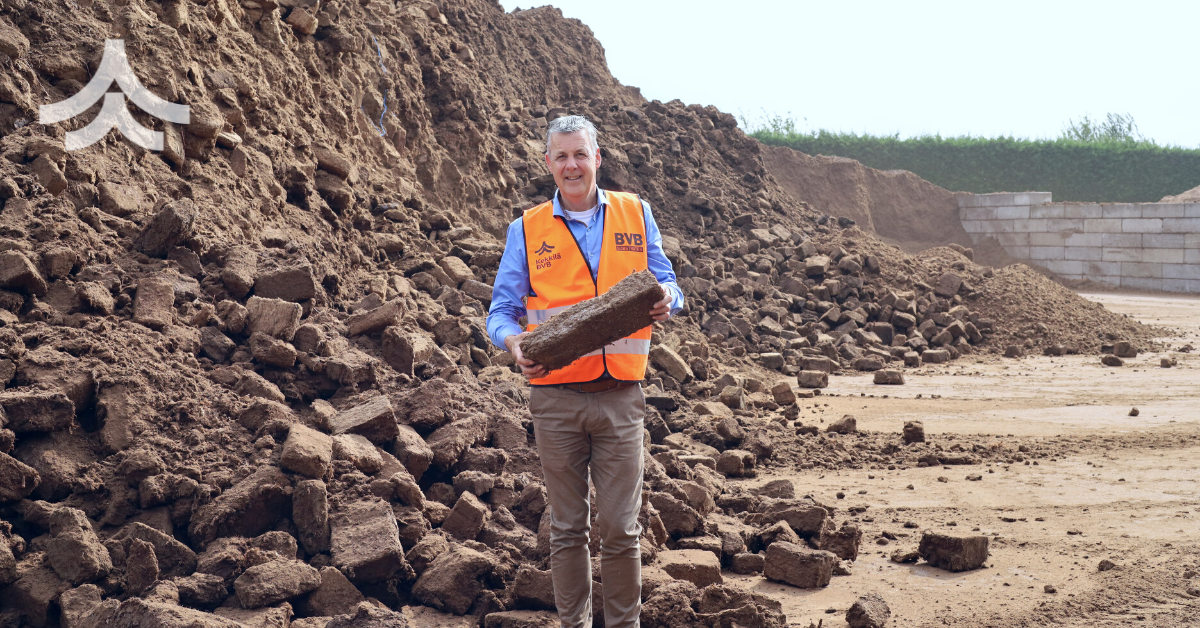
Arjen grew up in a horticultural family and trained in agricultural education. His father grew Cymbidiums, flowers that are only harvested during the winter period. During his studies, Arjen helped his father in the company during the winter period, but in the spring and summer he could always be found at Bas van Buuren where there was always work to be done.
After graduating in May at about the age of 20, there was still work in orchid cultivation, so it was almost automatic that he started working for Bas van Buuren. In September it was the intention to start working for his father in the Cymbidiums, but in August he was approached by the then owner Mart van Buren who asked him if he was interested in taking over the plant manager position as their then manager was going to leave. Arjen thought that he was still a bit too young, but eventually gave in to the charm of Mart van Buren (the then owner), helped by his father who advised him to take on this adventure and see a bit more of the world than just growing flowers.
Bas van Buuren was then a much smaller company than it is today, with only a few trucks and two halls and relatively small outdoor storage, but he was able to learn a lot there. He was responsible for both transport and production. However, after a few years Arjen started to get restless and wanted a new bigger challenge, so he decided to leave the company. Mart van Buuren understood Arjen’s need to grow and within two weeks came up with a proposal that he could buy a business in Limburg called Euroveen and asked Arjen if he would like to lead this new location. Moving from the West to the South was a big decision, but Arjen finally accepted the opportunity.
Euroveen was a company that was very outdated and carried out all its activities outside, when Arjen started there in 1988 it employed about 10 people. With the promise and intention to invest in technology and buildings at Euroveen and to produce the entire product range at Euroveen, facilitated his decision to take up this challenge. Arjen rolled up his sleeves and got to work. Being responsible in a small business, his duties and responsibilities varied; visiting customers, purchasing raw materials, calculating raw materials and selling prices, hiring new employees, and anything else that was required. He considers himself fortunate to have had the opportunity to learn all facets of the substrate business over the past 33 years and is grateful for the experiences it has brought him.
This brings us to last year. Since the merger of Kekkilä-BVB, Arjen felt that his position has changed significantly from being an all-rounder and having been fully responsible for a production site, to a responsibility for the operational activities only. And he could not optimally use and deploy extensive expertise and was therefore ready for the next challenge. In 2021 Arjen became our first Director of Operation Projects, meaning he now works across our company and with numerous departments managing new projects. One of his projects is that of Brill, he currently plays an essential role in the Brill integration project where he has been able to use both his German skills and his extensive know-how to gain knowledge from our newest colleagues and learn how they work.
In the future, Arjen looks forward to projects that stimulate ownership and entrepreneurship within Kekkilä-BVB by looking for opportunities that respond to market changes, the circular economy and innovation.
Productos y Servicios
The evolution of the Swedish Gardener with Pia Holmberg
“I still remember when I graduated from my masters in Horticulture and took the job at Hasselfors Garden. I thought ‘Growing media, how boring, I will stay only a couple of years and then try and find something more fun’ and here I am 30 years later. Turns out it was a lot more fun than I thought”
Tell me a bit about Hasselfors Garden and what you do there?
So, my name is Pia Holmberg and I look after the product portfolio for Hasselfors Garden. I’ve been with the company since 1989, back then it was part of an old industry group based in the tiny village of Hasselfors and we were the gardening horticulture sector. Peat was the main raw material and main product that everything was built around and was the core of the business. Many people don’t realise but the company dates to 1603. Of course, nowadays our selection of products has grown, and our office moved to Örebro.
What would you say is the biggest changes you have seen over past decade or so?
I think it is quite exciting with the change and transition right now. Just look at peat, we have plenty of peat here in Sweden and there hasn’t been particular “peat discussion” but it is coming. 10 years ago, no one asked what was in our substrates, they were only interested in its functionality but now we get queries about the raw materials, their sources and how environmentally friendly they are.
Is sustainability becoming a big factor in consumer choices in Sweden?
Absolutely. People in Sweden are more interested in making environmentally friendly choices which has led to a massive increase in demand for organic growing media, though this comes with its own challenges.
What would those challenges be?
Right now, it is about pesticides and certain herbicides which are not good for plant growth. The farmers use herbicides on their crops and then feed those crops to the chickens whose manure we use as fertilisers.
These residuals are far more widespread in the system than we first thought and there is very little knowledge about it as the levels giving plant damages are far lower than the limits for human consumption. We are trying to identify how common these residuals are, how to measure them and to find out at what level they cause damage to plants. To offer reliable products has always been number one for me.
Are there any interesting projects you are working on now?
Product development is always ongoing to help hobby gardeners. It is big business here in Sweden and to make the future happen for hobby gardeners we need more sustainable products as well as products for non-experienced gardeners and that can be a challenge. To find the right products and tell their story. I even dabble in marketing sometimes, just to make sure that we are describing our products correctly.
What do you mean when you say, “the right products”?
Yes. I am fighting for quality and functionality of the product, that is the most important thing to make sure that even beginner growers can cultivate successfully. I like to say I am the voice of the plants in the company with my background in horticulture. If you don’t know how plants work, you cannot make these products. But it is also essential to understand the user.
What kind of challenges are you facing regarding sustainable growing materials?
I think the role of peat has to be highlighted. It’s a slowly renewing growing media constituent and very good for growing everything due to its purity, but people just don’t know enough about it. Besides my job as a product manager, I also work at the peat association here in Sweden as the chair. We are trying to have meetings with politicians and tell the story about the importance of peat in both food production and fighting deforestation (growing the young tree plants) as well as growing media bringing joy and wellness to everyone. Swedish peat is produced in a responsible way but we are in a small industry and growing media is not on top of mind.
Most people don’t care much about peat or don’t know anything about it so we have to fight to spread correct information. People think you can just replace the peat and there are loads of materials out there but that is not true. There are no magic compost piles out there that you can just buy.
We’ve talked a lot about challenges, what are the up-and-coming opportunities?
The pandemic has shown how much people want to grow as they have the time and energy for at-home hobbies. The climate threats as well I think have led to more people wanting to be a bit more self-sufficient. We’ve seen a massive uptake in people wanting to grow their own food as well as wanting to know more about how it works and how food gets to their plates. This brings a lot of opportunity as people are showing a thirst for knowledge.
What about consumer trends in Sweden?
I think the next generation of growers are shifting the market. You see a lot of young people wanting to grow which means an uptake in hobby gardening in apartments. They tend to buy more potted plants for decorative purposes, but they also grow themselves, not necessarily food but just plants in general with maybe some herbs. It’s also interesting to note they grow all year round thanks to LED lighting, they will be growing bean sprouts in the middle of winter. And, of course, they are incredibly environmentally conscious with a higher portion of vegans. Two years ago we even released a vegan substrate, it’s not a huge market but it is there. The real trick is to make the growing media vegan AND organic.
Could I ask what you do when you are not helping the hobby gardeners of Sweden?
Well, I live in the countryside outside Örebro (between Stockholm and Oslo) and have a few houses, a horse and a stable, so there is always work to be done tending the land or the animals. I love it.
Learn more about Hasselfors Gardens here.
Learn more about Pia Holmberg here.
Sphagnum moss – sustainable innovations from 2020
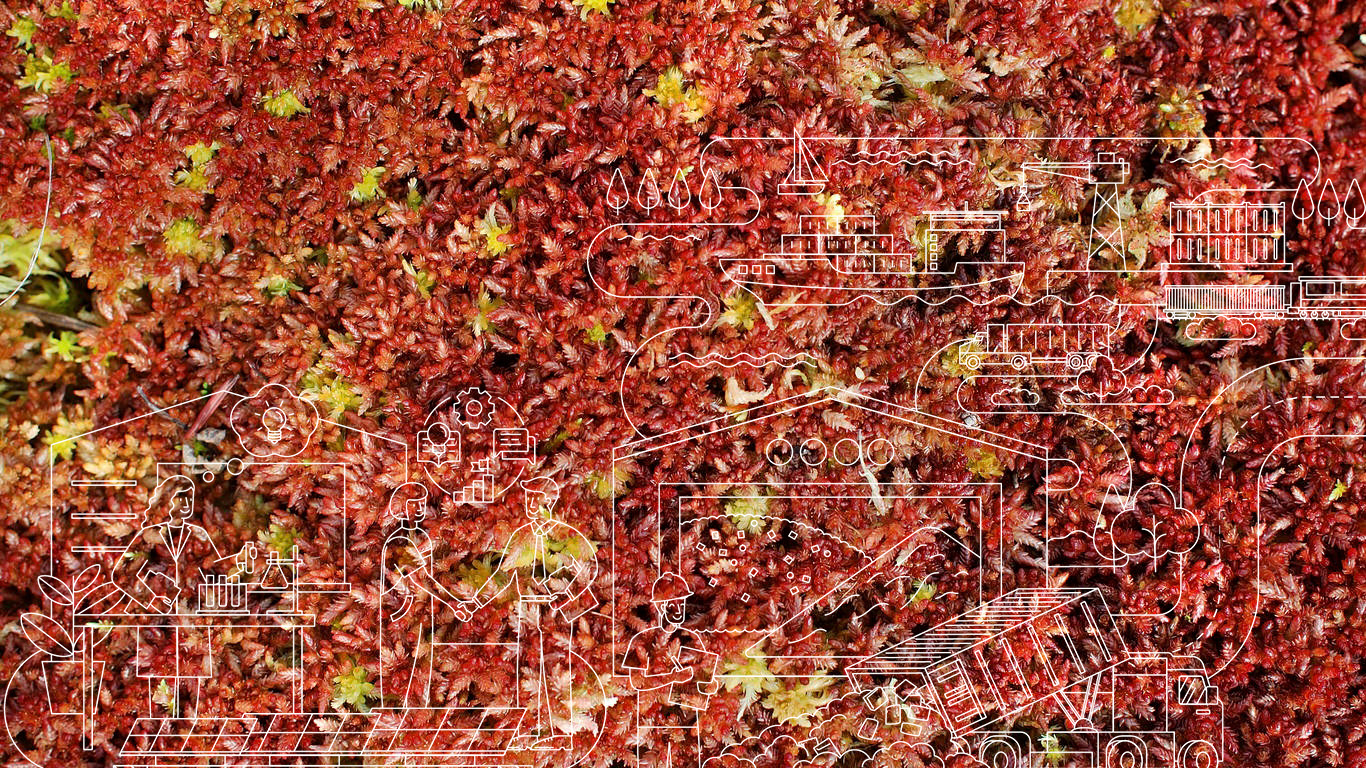
Challenge
At Kekkilä-BVB, innovation is the platform from which we grow. In addition to our laboratory, test greenhouse and phytotrons (climate chambers), we recently hired our new Innovation Director, Marck Hagen. Hagen is leading the way towards reaching our target. Kekkilä-BVB want all of the innovations to promote sustainability. Sphagnum moss as a raw material is one of those innovations.
Action
Sphagnum moss as a raw material is usually referring to the 380 or so species belonging to the genus of sphagnum moss. Around 40 of these species is found in Finland. Sphagnum collection mostly take place in peatlands which have an altered natural state due to the digging of ditches. A typical moss collection site is a few hectares in size.
The total area suitable for moss collection in Finland is approximately 300,000 hectares. Only a few hundred hectares will be used for collecting in the next few years. Collection is done according to the Finnish guidelines for Sphagnum moss collecting. Sphagnum moss grows quickly with a collecting cycle of less than 30 years. We see no impact on water bodies. The moss will be a sustainable raw material in the future.
Result-BVB Accretio, AirBoost and Natural Control Grow Boards
We use moss in mixtures of our retail BU but also in our BU professional growing. BU Professional spagnum moss is used with both brands. BVB Substrates with name Accretio and in Kekkilä Professional in various portfolios, among others Airboost and Natural Control Grow Boards. The properties include high water retention and absorption rate as it can retain as much as up to 25 times its own weight in water. Additionally, it creates air porosity in the growing media which is beneficial for the plant roots.
History of sphagnum moss
Sphagnum moss was already used during World War 1 for treating wounds. This antibacterial quality also benefits the growing media. It is resistant to the spreading of various fungi and diseases harmful to plants in growing media. Peat and Sphagnum moss complement each other in terms of their beneficial microbes and compounds. This improves the natural resistance of the roots of cultivated plants.
More information on Kekkilä Professional and growing in Natural Control Grow Boards?
Urbanization demands sustainable innovations
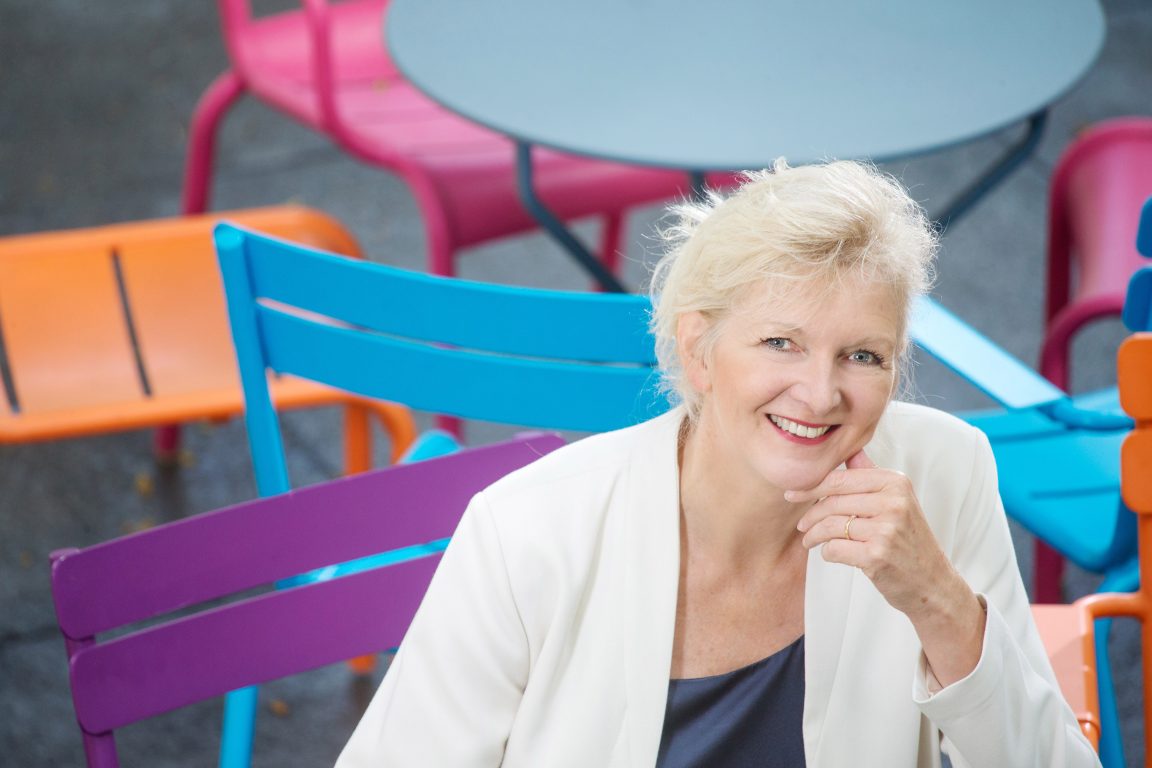
Every week the current number of urban inhabitants is boosted by a further one and a half million people. This phenomenon is not only manifest in rapidly developing countries in Asia, but also in Europe. What are the implications of urbanisation for food supplies? How can we safeguard the continued liveability of these cities? Horticultural suppliers such as Priva and BVB Substrates invest in sustainable solutions.
Meiny Prins is CEO and co-owner of the technology company Priva. She has a clear vision of urbanisation and its implications for food supplies. ‘Cities will continue to sprawl and grow. The limit is not 10 million inhabitants, but continued growth up to 20 million, or even 50 million inhabitants. City inhabitants need clean air, a safe environment and healthy food. Cities today are surrounded by a green belt where food is produced. But ever more urban authorities are realising that growth cannot be facilitated simply by pushing the green belt further out into rural areas.’
Better quality of life
According to Prins, cities will discover that quality of life has a higher priority than economic growth. ‘People no longer accept that they are forced to live and work in poor conditions. Cities will become the driving force behind sustainable solutions that will help us save our planet, together with the business community and consumers. Cities can integrate their green belt into the urban area. That is a great step towards a circular economy’, says Prins.
Marck Hagen, director of innovation at Kekkilä-BVB since 1 November 2019 shares Meiny Prins’ vision. ‘Urbanisation is irreversible. That equally applies to the global population increase. Consequently, the demand for food continues to rise. It’s an inescapable fact that a majority of the world’s population will live in regions that experience a scarcity of water within a few years. This development is both a challenge and an opportunity for our sector. Sustainable innovations are essential to provide city dwellers with healthy food and a good living environment. That is why we are investing in substrates, which can provide the answer to this dilemma.’
Renewable raw materials
Hagen cites several examples of successful innovations that respond to these challenges. ‘BVB Sublime is a growth medium based on foam that BVB Substrates developed years ago for the horticultural sector. The medium is ideal for the plugs used in vertical farming systems. Vertical farming is the practice of growing crops in multi-layer systems under environment controlled conditions using limited water, a cultivation method that suits urban areas. The medium is also ideal for hydroponics, an efficient method of growing leafy crops.’
The rising demand for healthy food in densely populated cities logically means that the demand for substrates is continuing to grow worldwide. In his role as director of innovation, Marck Hagen focuses on renewable raw materials. ‘These “renewables” are vital to avoid exhausting our planet’s resources. The innovation BVB Accretio is renewable peat moss, a sustainable alternative to peat with similar properties. We are also exploring other options. A material that is a residual product for some may well be a sustainable addition to our raw material portfolio.’
To ensure long-term liveability of burgeoning cities, not only food but a green living environment is also fundamental. Roof gardens help purify the air, reduce the concentration of fine particles, reduce the heat build-up and create water buffers in the city. ‘Our Urbanroof substrates and BVB Greenroll contribute to the greening and cooling of growing cities. The new substrates we develop for consumers can also improve the quality of life in urbanised regions.’ (read case: A green oasis in Dubai)
Difficult climates
As a high-tech company, Priva is also investing in sustainable solutions. The company is a global player in hardware, software and service provision in the field of climate control, energy saving and optimal water reuse. Technology in the high-tech greenhouse and the opportunities offered by vertical farming enable efficient and sustainable food production all over the world.
‘You can grow any variety of tomato and almost any other fresh crop no matter where in the world. Pure Harvest – a company that grow tomatoes in the desert near Abu Dhabi – is exemplary of this principle. In difficult climates, you can make this a profitable enterprise. These developments are moving forward rapidly’, says Meiny Prins.
Values and SDG
Priva and Kekkilä-BVB both see a role they can play in creating these kinds of sustainable systems. Prins: ‘We help growers generate greater profitability at the end of the year while using a lower input of natural resources. We want to grow this added value. Profit is not an end in itself, but a condition for continuity. Priva is value driven instead of profit driven’, says Meiny Prins.
That philosophy is shared by Kekkilä-BVB, who strive for ‘sustainable everyday living’. The values established by the company reflect the Sustainable Development Goals (SDG) set out by the United Nations. Marck Hagen: ‘In a regime of sustainable business practice, both nature and business can flourish. We endorse and operate in line with four Sustainable Development Goals: creating good health and well-being for people, sustainable food and living environments, developing recycled material for green cities and the living environment and safeguarding and ensuring biodiversity for the future. It creates a sense of purpose and power when companies work together to pursue these goals.´
Photo of Meiny Prins: Priva BV
This article was originally published in our professional growing customers magazine Bloom in January 2020.
